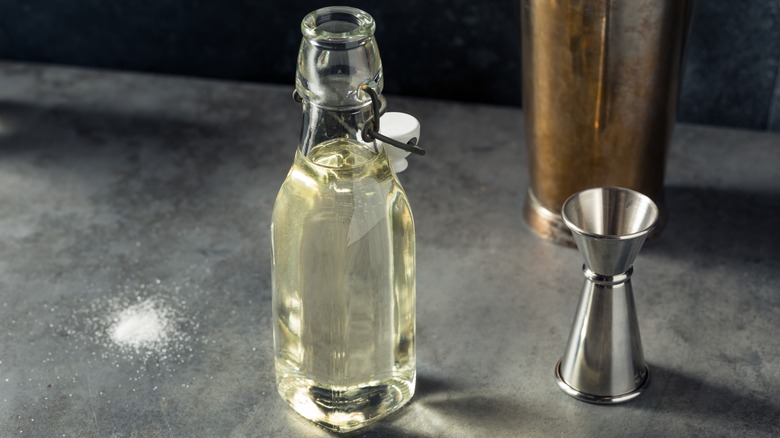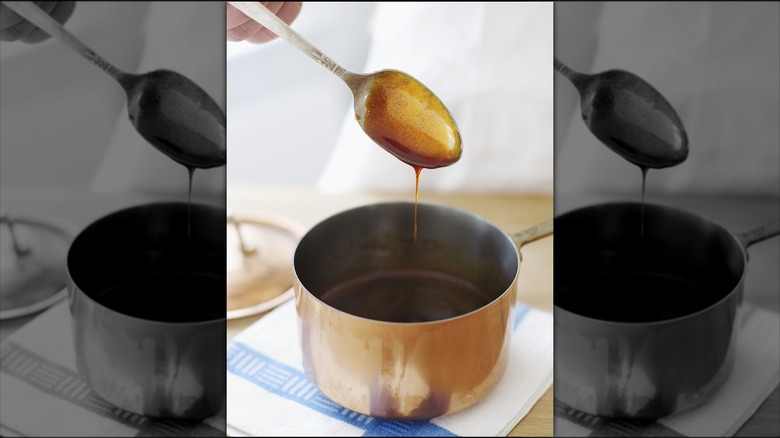The Best Way To Store Simple Syrup (And How To Tell If It's Gone Bad)
When you need to balance a mixed drink or add a touch of sweetness to a baked dessert, you want to reach for simple syrup. Used traditionally or infused with additional flavor to level up a cocktail, it's a versatile tool every seasoned chef and mixologist keeps on hand. Part of its appeal is that it has a long shelf life. Made by boiling together equal parts sugar and water, this versatile bar staple will keep longer than any baked dish you add it to, but only as long as you store it properly. We turned to an expert intimately familiar with this liquid nectar to find out how to store it best.
According to Lexi Parker, the lead bartender at the Poka Lola Social Club in the Dairy Block of Denver, Colorado, leaving your simple syrup on the counter isn't ideal. She says, "The best place to store simple syrup to ensure its shelf life is in the fridge. It should last for at least a few weeks in the fridge." The cold climate and minimal airflow in the fridge will help extend the life of your sugary liquid, ensuring it will be in good condition the next time you want to make an old fashioned or add a sugary glaze to a cake. However, we all know things don't last forever in the fridge. Even though simple syrup can last up to a month in the refrigerator, you want to check the quality before using it to sweeten your cocktail.
Simple syrup can go bad despite your best efforts
Even though it is protected inside the fridge, the quality of simple syrup will eventually decay just like any other food. Under ideal conditions, the simple syrup should last a few weeks without any problems, but you want to double-check the product before you put it in a mint julep on Kentucky Derby day. Lexi Parker says, "It's best to check the syrup for mold before serving if it's been in your fridge for a long time." Bacteria love to feast on soluble carbohydrates such as sugar, so giving your sugary liquid a second glance before adding it to a mixed drink or dessert is essential.
Mold isn't the only indicator that your nectar has gone bad. Simple syrup made with traditional white sugar should be clear colored, but if it's cloudy, it could be festering bacterial growth. It might also have an unpleasant odor. If it looks or smells off, it's best to throw it out. You are only throwing away a minimal amount of sugar, so there's no reason to take chances on a potentially harmful product.
Another problem you may encounter is crystallization. It is safe to consume and won't affect the taste of what you're adding it to, but once the simple syrup has reconstituted from its amorphous state, it won't be easy to work with. You can prevent this by letting it cool slowly after making it and storing it in an airtight container in the fridge.

